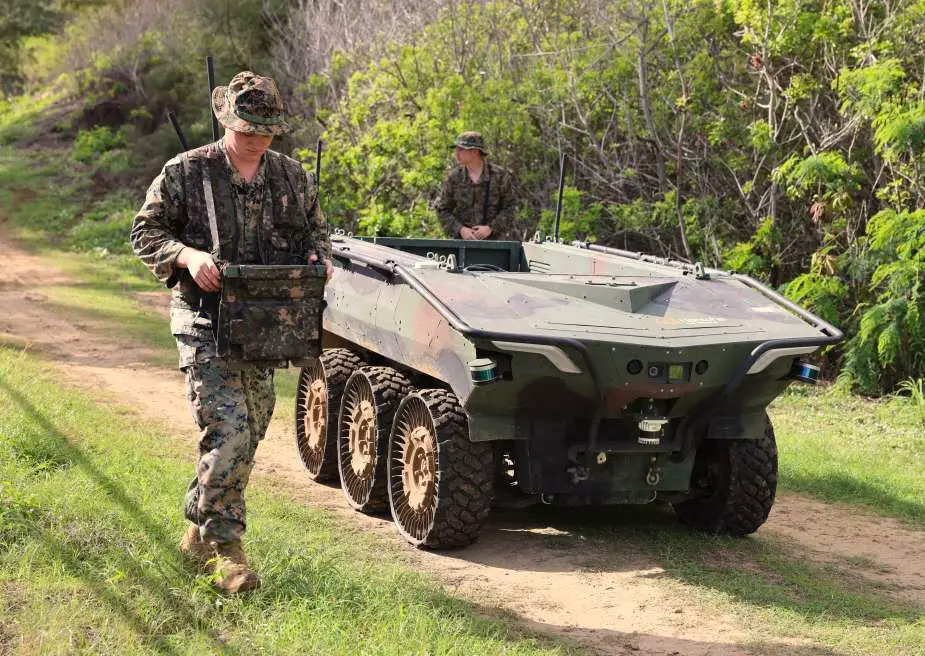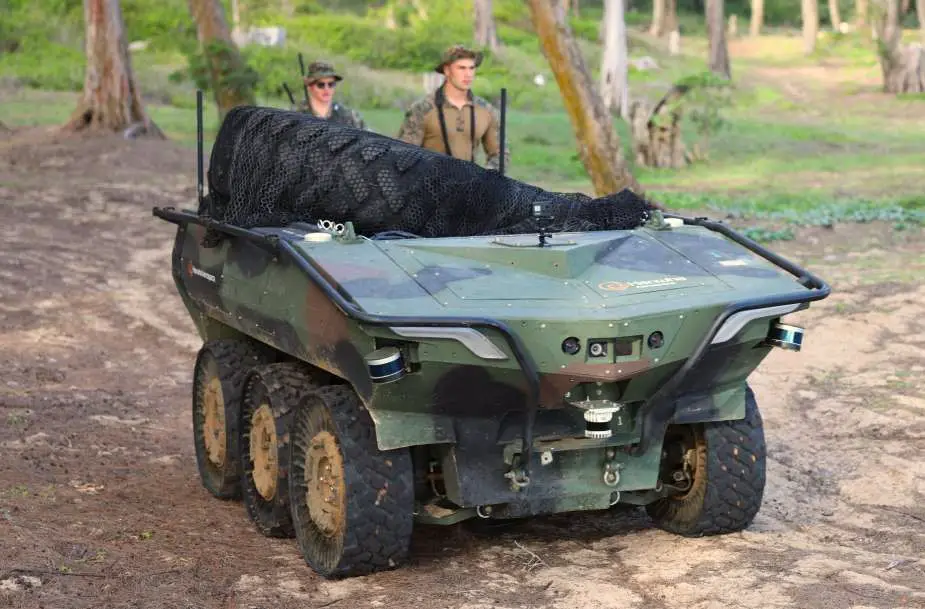
The US military has tested a new two-ton Arion-SMET ground drone (photo)
Hanwha’s multi-purpose unmanned ground vehicle (UGV), Arion-SMET, has completed a week-long field test conducted by the U.S. Marine Corps and the U.S. Army. This achievement marks an important milestone for the robotic vehicle, positioning it as a potential competitor in the global UGV market.
This is the first time that a South Korean UGV has participated in the U.S. Department of Defense’s FCT, a program designed to evaluate and validate advanced technologies developed by defense contractors from U.S. allies to enhance the defense capabilities of the U.S. military.

Prior to the actual FCT, a group of Marines underwent three days of training to operate the 2-ton electric robotic vehicle in challenging terrain conditions such as a sod-covered sandy beach, soft sand, sandy clay, bumpy and rutted roads. The tests focused on evaluating a variety of vehicle capabilities, including heavy equipment transportation, remote-controlled driving, waypoint navigation, exploratory maneuvering, soldier tracking and physical tethering.

Arion-SMET, an acronym for Autonomous and Robotic Systems for Intelligence Off-road Navigation – SMET, is one of the most advanced UGVs in terms of full integration of HAEMOS (Hanwha Aerospace’s robotic and autonomous systems solutions) with fully electric 6X6 wheels. The vehicle is used to support infantry operations, including ammunition transportation, medical evacuation, reconnaissance and close combat support.

With a maximum payload of 550 kg, the UGV can travel up to 100 km on a full charge, reaching a top speed of 43 km/h on asphalt roads and 22 km/h on unpaved roads. Additionally, the Arion-SMET can be optionally equipped with an advanced Remote Controlled Weapon System (RCWS) that can automatically track and target targets through localization of the firearm source, including a 5.56mm RCWS that can be expanded to a 7.62mm machine gun.
The Arion-SMET can be operated in a variety of modes, including remote-controlled driving, autonomous off-road driving, exploratory maneuvering, physical tethering, and soldier and vehicle guidance.

